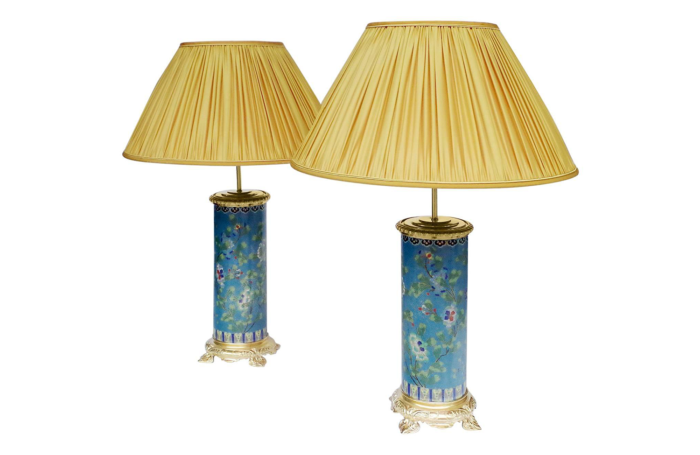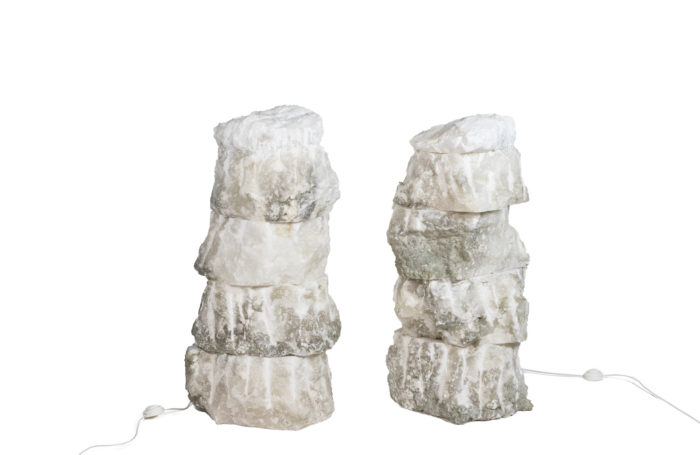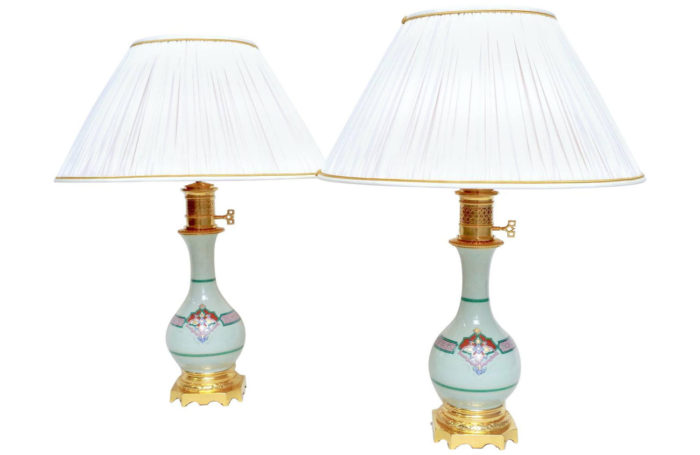Questions ? ![]() : +336.087.843.37 |
: +336.087.843.37 | ![]() contact3@jeanlucferrand.com | Buyer's Guarantee
contact3@jeanlucferrand.com | Buyer's Guarantee

Contact us and request a quote!
![]() : +336.087.843.37
: +336.087.843.37![]() : contact@jeanlucferrand.com
: contact@jeanlucferrand.com
![]() Shipping prices vary regarding destination. Contact us.
Shipping prices vary regarding destination. Contact us.
![]() 14 days free returns. Check out our: Terms and Conditions
14 days free returns. Check out our: Terms and Conditions ![]() |
| ![]()
![]() Question ? Call us +336.087.843.37.
Question ? Call us +336.087.843.37.
Paris porcelain and gilt bronze lamp, circa 1880
1800,00€
Lamp in Paris porcelain and gilded bronze in the shape of a baluster, duck blue color. Openwork circular base and quadripod.
French work made circa 1880.
Dimensions: H 72 x W 16 x D 16 cm
Reference: LS5579273
New and functional electrical system.
! The price indicated does not include that of the lampshade. However, our workshop can advise you with pleasure and make it according to your choice of size and color (to be requested)!
With the discovery of kaolin in Saint-Yrieix in 1768, the manufacture of porcelain augmented in Paris with the creation of many manufactures of hard porcelain. They were put under the patronage of princely personalities as the Count of Provence for the Clignancourt manufacture or the queen Marie-Antoinette for the manufacture of the rue Thiroux and were put under the name “Porcelain de Paris”.
At the 18th century, the manufacture of this porcelain was developed in three categories: table pieces, toilet objects and ornament items; in a stylistic evolution which temporally adapted to new tendencies of decorative arts.
The floral decor dominated the production of the porcelain de Paris, sometimes mixed with fruits and foliage swags. Then, more and more, the subjects were diversified with animals, characters, landscapes, chinoiseries… Coloured backgrounds were sometimes edged with a gilt frieze or were used to highlight a polychrome decor. At last, two other processes were widely used and had a great success: shades and gilt.
If the characteristically decor of the first third of the 19th century was the gilt decor on a coloured background on the must rich pieces or fully gilt doubled (interior and exterior of the item), the mid and last century production was industrialized and particularly liked the copy of ancient styles, often mixed between them.
At the same time, if at the beginning of the 19thcentury, manufactures of the porcelain de Paris were very flourishing, from 1820 their number decreased and many provincial manufactures depots were put under the term “porcelain de Paris”. Indeed, the pieces, manufactured in province, were often decorated in Paris, permitting to save this name despite the increase of the production.
A certain confusion is possible ; indeed it also exists an eponymous manufacture named Manufacture of the Porcelain de Paris founded in 1829 by Jean-Marx Clauss. It had a similar production with stylistic evolutions as the general production of the porcelain de Paris and today yet exists, while its activity is now turned to porcelain watchmaking and jewellery.
Source :
R. de Plinval de Guillebon, Faïence et porcelaine de Paris. XVIIIe -XIXe, 1995, Editions Faton
Contact devis transport / delivery costs :
Telephone / By Phone : +33(0)6 08 78 43 37












